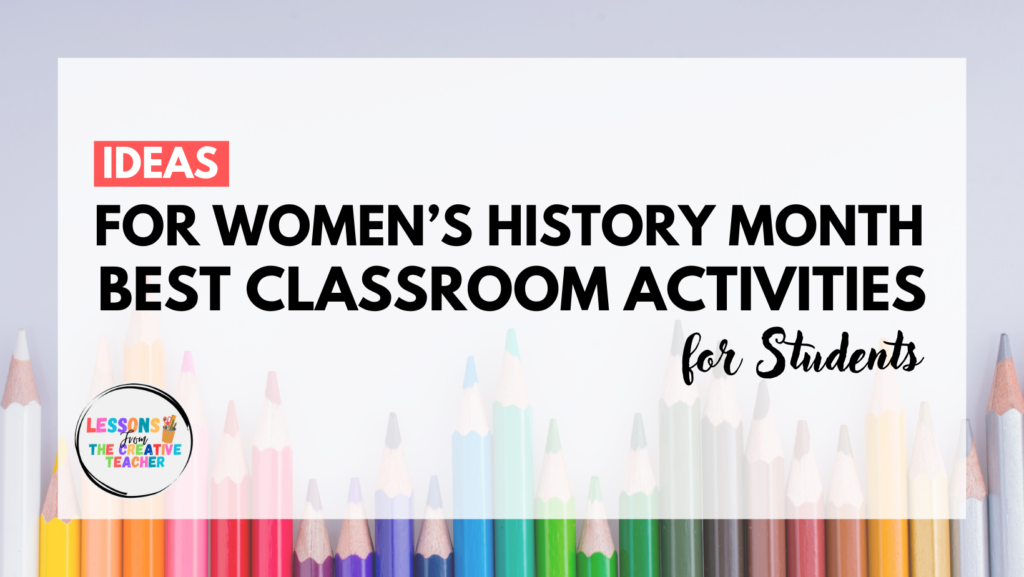Introduction
March is more than just the start of spring—it’s Women’s History Month, a time to honor the fearless women who’ve shaped our world. In schools, this celebration isn’t just about dates and facts; it’s about inspiring students with stories of resilience, creativity, and courage. But how do you make history come alive in the classroom? Don’t worry—we’ve got you covered! This post shares actionable Women’s History Month ideas, including ready-to-use resources, to help teachers create engaging lessons. Let’s dive in!
Why Women’s History Month Matters in the Classroom
Education isn’t just about textbooks—it’s about building empathy, curiosity, and respect. By celebrating Women’s History Month, you’re showing students that everyone’s contributions matter, regardless of gender. Highlighting diverse role models—from scientists to artists—helps kids see themselves in history and challenges stereotypes. Plus, these Women’s History Month ideas do more than teach facts; they spark conversations about equality, perseverance, and how ordinary people can make extraordinary change.
5 Engaging Classroom Activities for Women’s History Month
1. Trailblazer Biography Projects
Assign students to research iconic figures like Rosa Parks (civil rights hero) or Malala Yousafzai (education activist). For a twist, use Resource 2 (task cards) to introduce lesser-known leaders, such as Wangari Maathai, who planted millions of trees in Kenya.
- How to do it:
- Have students create posters or digital slideshows.
- Host a “Living Museum” where kids dress up as their subjects and share facts.
2. Interactive Timeline of Women’s Achievements
Turn history into a hands-on adventure! Use digital tools like Canva or giant posters to map milestones, from Susan B. Anthony’s suffrage work to Kamala Harris becoming VP. Pair this with Resource 1 (reading passages) to add depth—like exploring the 1975 Icelandic Women’s Strike.
3. “Women in STEM” Experiments
Link science lessons to pioneers like Katherine Johnson, the NASA mathematician from Hidden Figures. Try simple experiments:
- Build a DNA model (inspired by Rosalind Franklin).
- Code a basic game (honoring Ada Lovelace, the first computer programmer).
Resource 1 includes STEM-focused passages for cross-curricular learning!
4. Role-Play Debates on Equality Movements
Reenact pivotal moments, like the 1920 suffrage debate or 1970s feminist rallies. Use Resource 2 (task cards) to assign roles: one student could argue as Sojourner Truth, another as a historical opponent.
5. Collaborative Art Inspired by Iconic Women
Create a class mural celebrating artists like Frida Kahlo or Georgia O’Keeffe. For younger students, try collage work using symbols (e.g., Maya Angelou’s poetry). Resource 1 provides context on cultural contributions to guide discussions.
Tips for Enhancing Student Participation
Adapt Activities for Different Age Groups
- K-2: Simplify debates with yes/no questions (“Should everyone vote?”).
- 3-5: Add creative writing, like journal entries from a historical figure’s perspective.
- 6-12: Encourage deep research on current issues, like the gender pay gap.
Blend Technology and Tradition
Mix virtual field trips (e.g., the National Women’s History Museum website) with hands-on projects, like crafting protest signs for a classroom march.
Connect Past to Present
Use Resource 2 to compare figures like Ruth Bader Ginsburg with modern activists like Greta Thunberg. Ask: “How are their challenges similar?”
Boost Your Lessons With These Women’s History Resources
Resource 1: International Women’s Day Reading Comprehension Passages
- What’s included: 40 passages spanning science, politics, arts, and more!
- Why teachers love it: Builds literacy skills while exploring Women’s History Month ideas through diverse role models. Perfect for quiet time or group work.
Resource 2: Women’s History Month Task Cards
- What’s included: 40 trivia cards testing knowledge of pioneers like Marie Curie and Harriet Tubman.
- Why teachers love it: Sparks lively discussions with Q&A prompts like, “How did Shirley Chisholm change U.S. politics?”
Conclusion
With these Women’s History Month ideas, you’re not just teaching history—you’re shaping future leaders who value equality and diversity. Ready to save time and inspire your class? Grab the bundled resources today and give your students the gift of unforgettable lessons!
What are you waiting for? Let’s make this Women’s History Month the best one yet!

